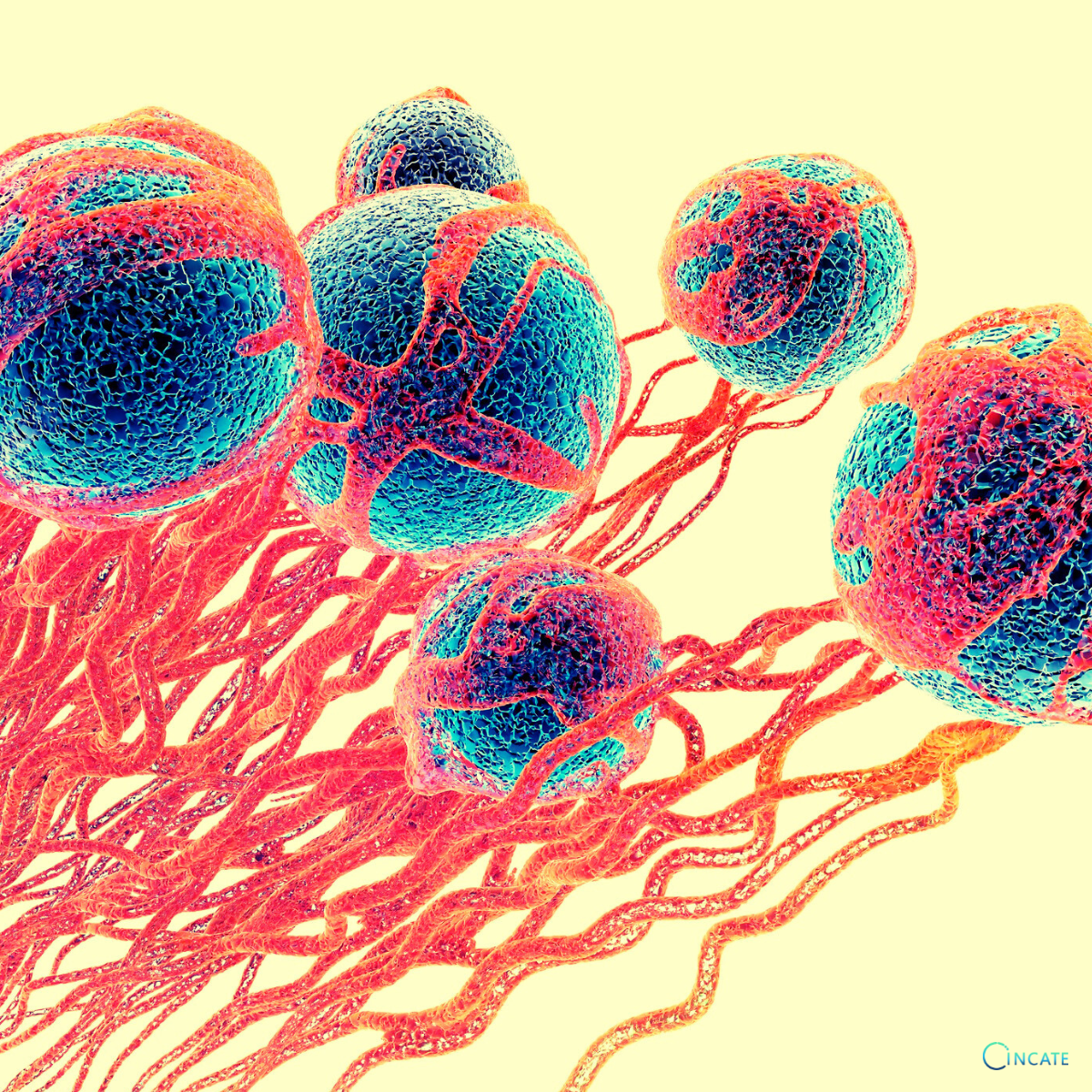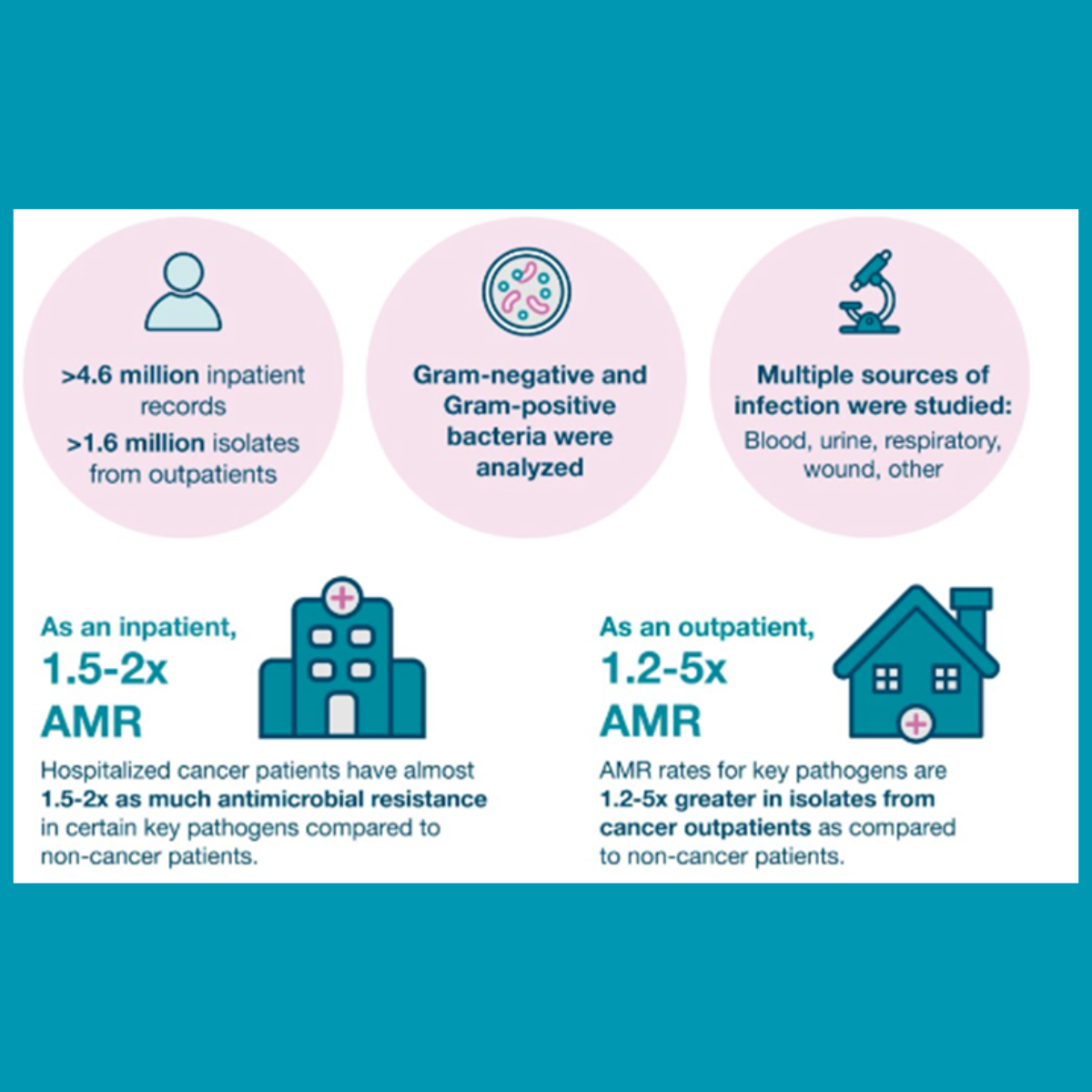When Cancer is no longer the biggest threat: AMR’s growing shadow over oncology

In 2025, it is possible — and increasingly common — to treat cancer but lose a patient to a drug-resistant infection. This disturbing reality underscores the urgent, and often overlooked intersection of antimicrobial resistance (AMR) and cancer care.
A critical but still underrated threat
While clinicians have long understood the high vulnerability of cancer patients to drug-resistant infections, the scale of the threat is only now becoming clearer and being known by the patients – especially in low-income countries, where the infections incidence is higher. Recent studies are finally beginning to fill in this key data gap, bringing renewed urgency to the table. In addition, an increasing number of institutions are launching awareness campaigns to reach out to the public; such as this initiative, Antimicrobial resistance (AMR): a growing threat to cancer care from the Union for International Cancer Control (UICC).
Amongst others, papers like “Antimicrobial resistance: a problem across the cancer care continuum” by William C. Shropshire and Samuel A. Shelburne, published in The Lancet Oncology, are providing a clearer overview of how AMR complicates every stage of cancer treatment.
What the Data Show
Two US-based studies by Gupta et al., commissioned by the Cancer & AMR Consortium – a collaboration between BD, UICC, and the AMR Action Fund – , analyze AMR rates in cancer inpatients and outpatients using a massive clinical dataset. The findings are clear: patients with cancer experience AMR pathogen rates up to 2–3 times higher than non-cancer patients, particularly for pathogens like fluoroquinolone- and carbapenem-resistant Enterobacterales, MRSA, and vancomycin-resistant Enterococcus.
You can read the articles here:
– “Incidence and prevalence of antimicrobial resistance in outpatients with cancer: a multicentre, retrospective, cohort study”, Vikas Gupta, PharmD ∙ Michael J Satlin, MD ∙ Kalvin C Yu, MD ∙ Yehoda Martei, MD ∙ Prof Lillian Sung, MD ∙ Lars F Westblade, PhD ∙ Scott Howard, MDf∙ ChinEn Ai, MPH ∙ Diane C Flayhart, MS – published in the The Lancet Oncology
– “Burden of Antimicrobial Resistance in Adult Hospitalized Patients With Cancer: A Multicenter Analysis”, Vikas Gupta, Michael J. Satlin, Kalvin Yu, Yehoda M. Martei, Lillian Sung, Lars F. Westblade, Scott C. Howard, ChinEn Ai, Diane C. Flayhart – published in the Wiley Online Library

Source: Cancer & AMR Consortium – https://antimicrobialresistancefighters.org/cancer-and-amr-consortium
Sallah et al. went even deeper with their extensive global review, commissioned by the Union for International Cancer Control (UICC), analyzing 274 studies across 24 years. Their findings are clear:
– 35% prevalence of AMR infections in patients with hematological cancers
– There is a substantial mortality burden: two-thirds of the studies linking AMR infections to higher death rates
– There is a critical data gap from low- and middle-income countries (no studies from the WHO Africa region)
You can read the whole review here: “Antimicrobial resistance in patients with haematological malignancies: a scoping review” , Ya Haddy Sallah, MD et al, published by The Lancet Oncology
Why does it matter?
As the numbers show, resistance rates for key pathogens in cancer patients routinely exceed 10%, a benchmark that typically triggers changes in empirical antibiotic strategies. But in many settings newer antibiotics are either unavailable or unaffordable, leaving clinicians to rely on older, more toxic drugs that are associated with worse outcomes.
And this is just unfair. No patient should beat cancer only to die from a preventable, drug-resistant infection.
A Call to Action
But not all is yet lost. These new findings point to both, hope and urgency. The methodologies used (from big data mining to global literature reviews) offer powerful tools for future research. On the other hand, we also need policy changes, funding, and awareness, from both communities, AMR and cancer care. As much as we need R&D strengthened on novel modalities fighting AMR. And this is only possible if we all work together.
As the world makes the arrangements for the UN High-Level Meeting on Noncommunicable Diseases (NCDs) on September 25 2025, and builds on last year’s focus on AMR, now is the time to unite these global health agendas.
Cancer care cannot be kept away from infectious disease control. The voices of patients, clinicians, researchers, and advocates must come together to ensure that antibiotics remain a pillar of modern cancer treatment. Now and for generations to come.

